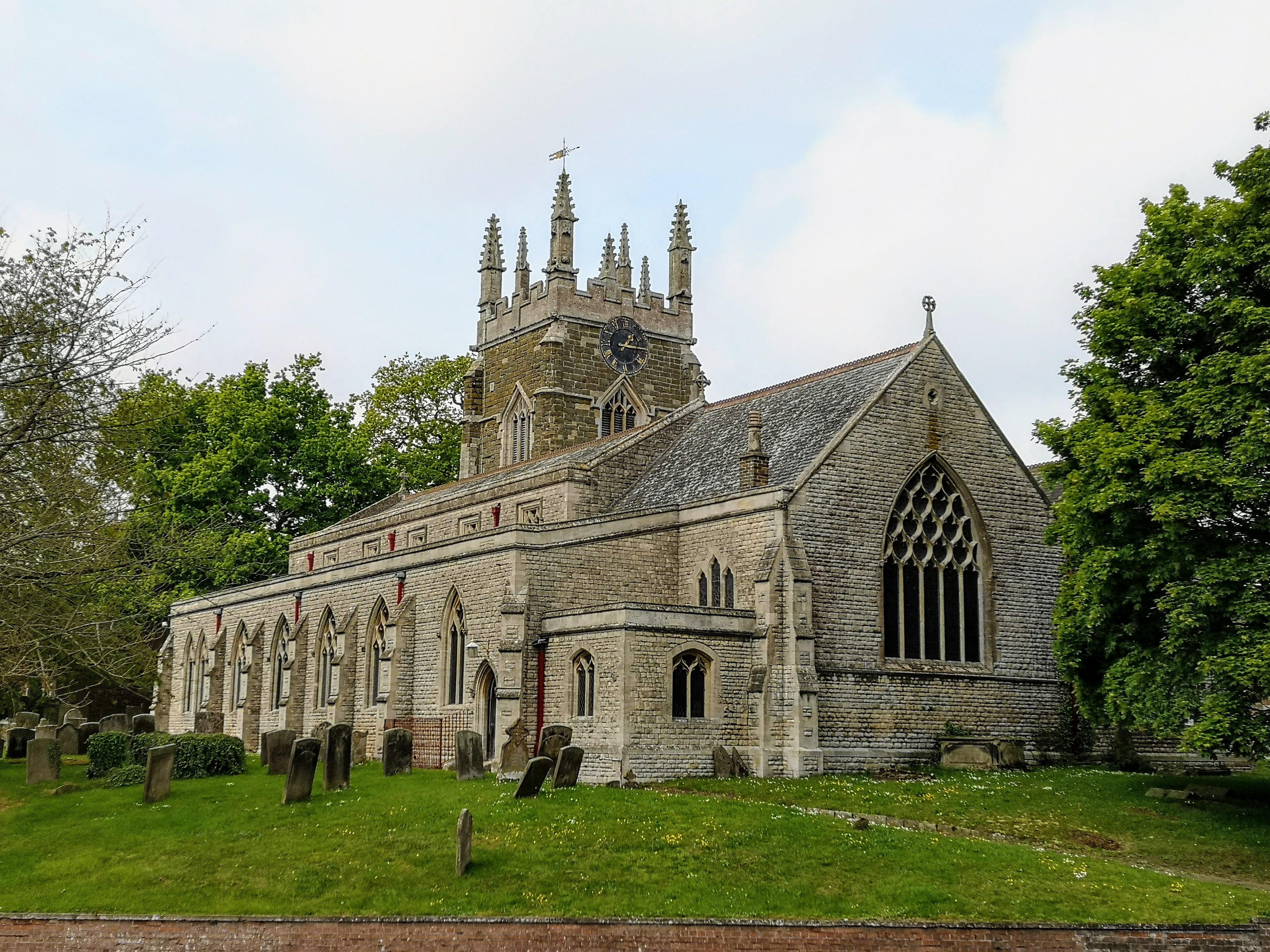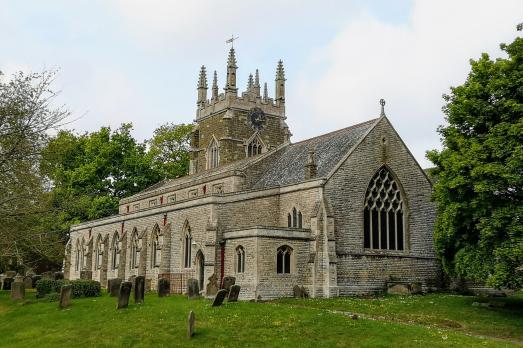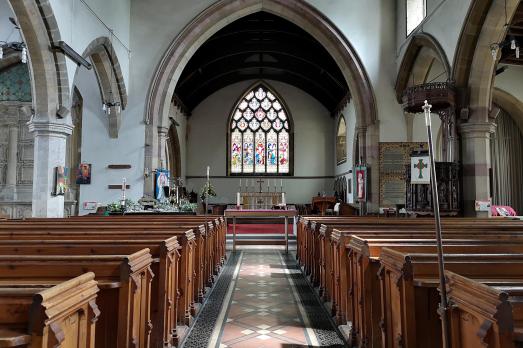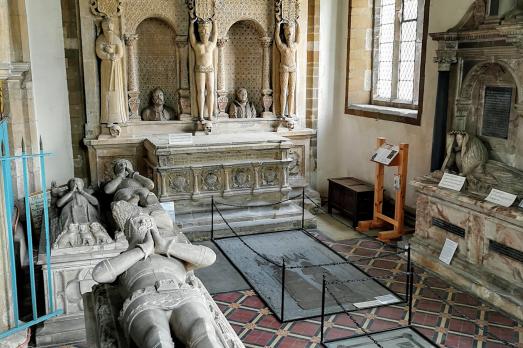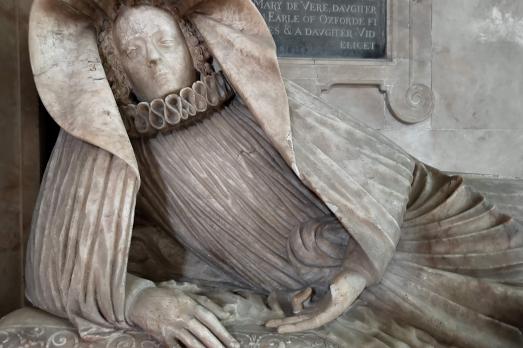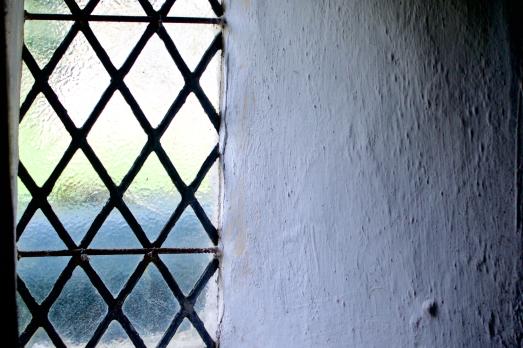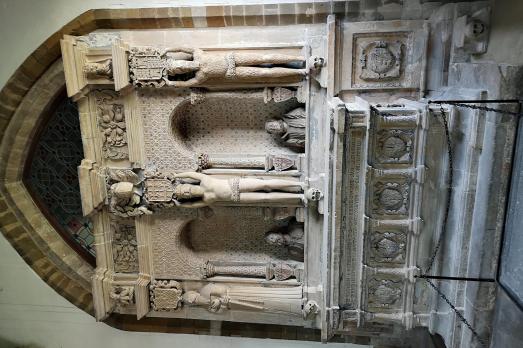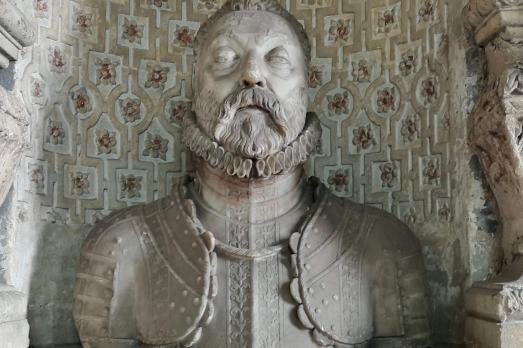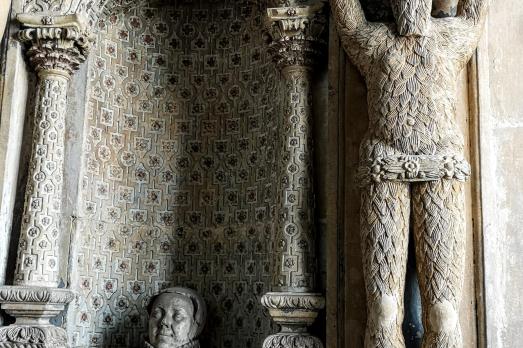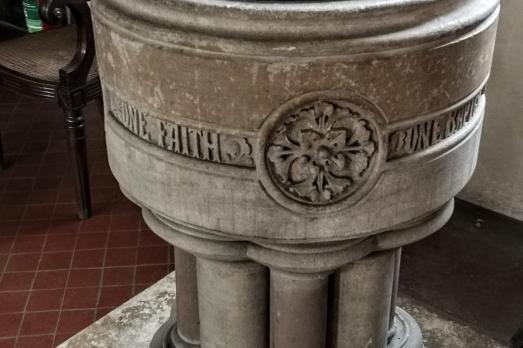At the west end of the church, on what was the original outer wall of the tower, is a memorial to Sir John Franklin (1786-1847). Franklin served under Admiral Nelson at Trafalgar and from 1834-1845 he was Governor of Van Dieman's Land (Tasmania). He is remembered most for his attempts to find the North West Passage linking the Atlantic and the Pacific oceans.
Nearby is a flag presented to the church by the High Commissioner of Canada on the two hundredth anniversary of his birth.
The Willoughby chapel is a place to remember generations of the Willoughby family. Taken as a whole this is probably the finest collection of medieval monuments in Lincolnshire.
The earliest tomb is of John Willoughby, 2nd Baron (1304-1349). The effigies of John and his wife Joan Rosceline lie under the easternmost window. He is shown in armour with his feet resting on a lion while Joan's feet lie on a lapdog, a symbol of fertility in the medieval period. John fought with the Black Prince at the Battle of Crecy in 1346.
But the finest memorial is that to Katherine, 12th Baroness Willougby d'Eresby, Duchess of Suffolk (died in 1580) and her second husband Richard Bertie. Katherine was the daughter of a Spanish lady in waiting to Catherine of Aragon. She was married at 14 years old to Charles Brandon, Duke of Suffolk. Katherine was a leading Protestant reformer and, following the death of Charles in 1545, it was rumoured that she was the next potential wife for Henry VIII. Instead, she married Richard Bertie. Their son Peregrine became a favourite of Elizabeth I.
Sir Peregrine's tomb, built in 1600, is the last major Willoughby tomb in the chapel and perhaps the first English tomb to feature a standing effigy of the deceased. This impressive monument is made of alabaster and marble and shows Peregrine in armour, his helmet and gauntlets at his feet.

